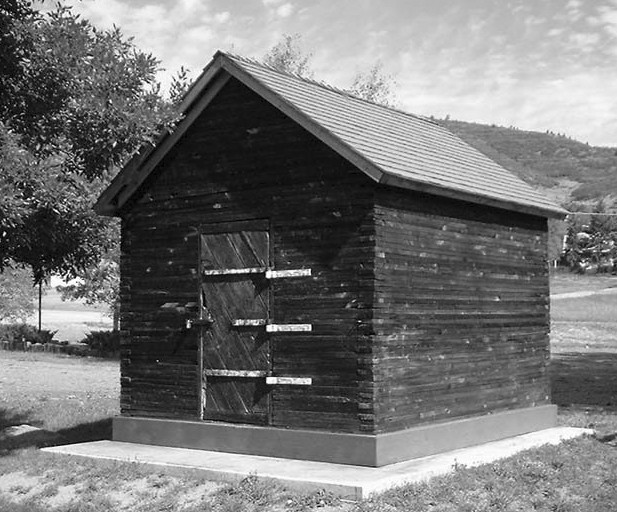Palmer Lake History
An Army expedition, led by Colonel Henry Dodge, visited the Rocky Mountains in 1835 and mapped a body of water which they named Summit Lake. Afterward, the name changed to Divide Lake, and finally, Palmer Lake. The lake sits on the Palmer Divide where watershed drainage separates the waters of the Platte River to the north and the Arkansas River to the south.
The Palmer Lake area has a remarkable history including events associated with the “wild west.” There have been Indian raids and saloon shootings. There were several forts in the area where settlers could hole up until the trouble passed. One of these was the “McShane Fort” located just off highway 105, close to the railroad overpass. Posses have apprehended and strung up murderers on the outskirts of Monument and Palmer Lake.
The area was home to five gold mines; however, none hit the mother lode. The Greenland open space area to our North once shipped more cattle to market than any other location in Colorado. The Goodnight-Loving cattle drive from Texas came through our area ca 1866 and over the Palmer Divide.
General William J. Palmer, a Medal of Honor recipient, came west after the Civil War to found the City of Colorado Springs & start the Denver & Rio Grande Railroad, a 3-ft. narrow gauge line, in 1871. He purchased the land known as the Monument Farms & Lake Property which was to become the Town of Palmer Lake. (The 82 acres surrounding the Rock House was deeded from the United States of America to Arthur McIntyre in August 1870 for only $165.54 with taxes of $0.50.)
In 1872, the lake was a critical stop for the railroad because the steam trains chugged up to the Palmer-Divide summit and had to take on water to head down. The lake was the only natural water supply available on a year-round basis. Passenger trains would stop for 10 minutes to take on water, or you could get off for a day of picnicking, fishing, and boating or wildflower hikes for a fee of $1.50 roundtrip from Denver. Later, ice houses at the south end of the lake furnished ice by contract to the D&RG Railroad for use in “refrigerator” and dining cars.
Palmer Lake is a spring fed lake, sitting on a low spot of Palmer Divide between Metro Denver and bustling Colorado Springs. Its waters uniquely drain both North and South. To the North, into the Platte River, route of the Oregon Trail, to the South into the Arkansas River route of the Santa Fe Trail. This little mountain lake links the two most famous historical trails of U.S. History.
By 1882, the town began enlarging the lake to its present 10 acres. A boathouse, public park, fountain and covered pavilion were added to help attract tourists. It is believed an underground spring originally fed the lake. In dry years, water has been piped down from the two reservoirs in the canyon between Chautauqua and Sundance Mountains in which North Monument Creek flows. The reservoirs were built by the railroad to replenish the lake. (Today, they serve as drinking water for the town.)
Dr. William Finley Thompson, a dental surgeon born in Ohio, who had practiced in Omaha, Portland, San Francisco, and London, England, came to Colorado in 1882 and soon platted the Town of Palmer Lake, intending it as a health and vacation resort. He built the Victorian mansion, Estemere, in 1887 for his family, but faced bankruptcy in 1890, when he left Palmer Lake to raise capital.
Prior to the automobile, Palmer Lake enjoyed visits from Denverites and others wishing to beat the heat of city summer temperatures. The Rocky Mountain Chautauqua, a people’s vacation university, was active from 1887 – 1910, hosting festivals and programs in music, art, drama, religion, & nature. The Rockland, a sixty-one room hotel, provided all the amenities any visitor could wish for to include a petting zoo.
Enterprising craftsmen recognized this as opportunity to provide summer housing vs. canvas camping. In addition to pavilions for all to gather in they built cute efficient tiny houses for folks to enjoy their Mountain retreat. The area to immediate south of Palmer Lake is where these Tiny Houses were perched on ascending hillsides at the very edge of Rocky Mountains. They called the area “The Glen,” probably a tribute to romantic Scotland.
Palmer Lake Main Street 1905
Palmer Lake 1893 by H.S. Poley
Palmer Lake
Palmer Lake Resort Town 1902
Palmer Lake Star 1935
Palmer Lake Volunteer Fire Department – First firetruck was a 1921 Dodge
Circa 1938
(Still being used as the PLFD)
White Kitchen 1935 (presently the Rock House Ice Cream Parlor)
Palmer Lake School House 1893 (Presently a private residence)
The Estemere 1930 (Presently a private residence)
Phillips Brothers Meat Market and Groceries 1893
The Rocklands Hotel 1889
Hanks Livery and Feed
Little Log Church and Parsonage (Still being used as a church
Old Palmer Lake Jail (Currently on display at 54 South Valley Road in Palmer Lake
Pillsbury Store 1888
Elephant Rock 1903
Palmer Lake Yule Log Hunt 1940-1950

















